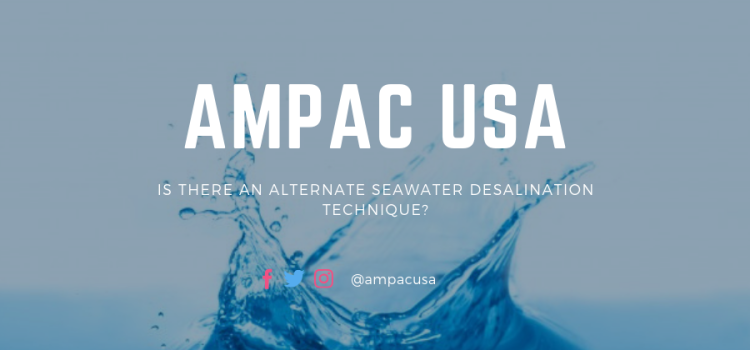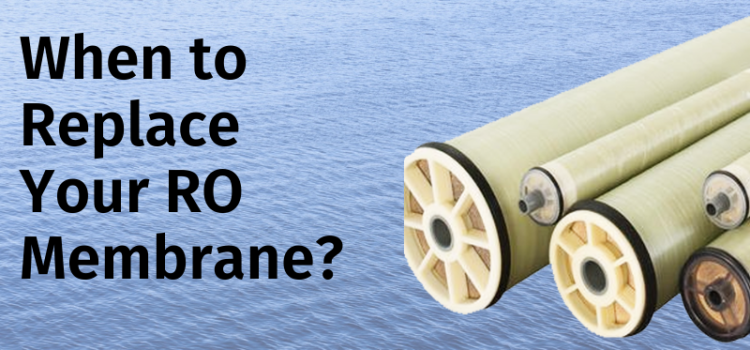As we move ahead with innovations, the option of an alternate seawater desalination technique does not completely depend on reverse osmosis. The need arises from the fact that desalination technique is expensive for many countries. The process is high maintenance, requires to abide by stringent standards of wastewater disposal and feed water supply. This can be difficult for a lot of countries to fulfill. With the current scenario where a number of people in water stress are growing by each day, options need to be provided for nations that are not financially strong. Another method, which is less expensive came about from the collaboration between the University of Austin, Texas and the University of Marburg, Germany. This article explores the viability and potential uses of this alternate technology in the future.
Description:
One of the key issues that a number of countries face is the fact that they possibly cannot afford the expenses related to seawater desalination to relieve a little stress on natural resources. As of now, seawater desalination uses the basic method of reverse osmosis, pushing impure or saline water through a semi-permeable membrane to get pure water on the other side.
A Costly Affair:
While it does work on household and even commercial levels, membranes for a larger scale are costly due to the care of the intricate design. Moreover, a single desalination plant holds at least 40,000 such membranes. The desalination plant at Carlsbad, CA, USA cost a total of $904 million to make. And even then, the maintenance each year required $53,100,000. The plant’s life expectancy is 20 years and runs at 45-50% of capacity. This is a morbid thought for developing countries who have weaker economies.
Reverse Osmosis, therefore, might prove to be costly for underdeveloped and developing countries due to their financial constraints. But even though the process is amongst the costliest in the world, continuous efforts are being made to keep the option on the table for everyone. This is being done by developing the technology further in research labs so that it is tested and later used on a larger scale.
The Innovation
Before the development of membrane technology and then the filters, interesting research had come up from the collaboration between America and Germany. The research was first published in a journal Angewandte Chemie, in 2013 wherein contrast to the traditional methods, the new method is fairly simple and energy saving. It is based on the concept of bipolar electrodes and micro-channels. It works without membranes or energy.
- The water is forced through a dual microchannel system which is 22 micron-meter wide.
- One of the micro-channels is an auxiliary channel and other is a branch working channel.
- A bipolar electrode is used to electrically connect the two channels, auxiliary to the power source and the branch working is grounded.
- A 3V potential difference is then established. The branch point of the working channel gets a jut of the electrode.
- The voltage results in the negatively charged chlorine ions to oxidize into neutral ions at an end of the electrode.
- A zone of negatively charged ions is created in the narrow channel directly resulting in an electric field gradient. This directs the positively charged ions to the branching channel.
- Due to the need of electroneutrality, the anions follow the positive ions into the branched channel.
- Therefore, this water is enriched with ions and the one in the working channel is partially desalinated.
This process requires less energy in comparison with the reverse osmosis process. Moreover, the only job required of RO after this process will be a rejection of sediments and leftover particles. This means RO membranes developed can be less intricate in design thus saving money.
This was developed by Richard M. Crooks from the University of Austin, Texas and Prof. Ulrich Tallarek from the University of Marburg, Germany with their colleagues in support of The Department of Energy U.S.
Could This Be An Alternative?
The UN has estimated that around one-third of the world population lives in water-stressed areas and is bound to grow in number by 2025. With more actions taken towards bringing this number down, the process might be revived again for research so that we get all the help we can. After 4 years of further research, the process will probably be used at a larger level in industries and desalination plants.
Too much energy consumption from these plants means exploiting fuel reservoirs and dumping of the rejected saline water will hinder the saline content of the seas leading to climate change in the worst case. Therefore, more and more solutions to be available can make it easier to make a sustainable future.
About the Author:
Ampac USA is a manufacturer of water treatment systems used around the globe for quality drinking water. The company has an experience of over 40 years, uses the latest technology to provide a standard, reliable product and works with experts to give the best possible service.
Reference Links:









